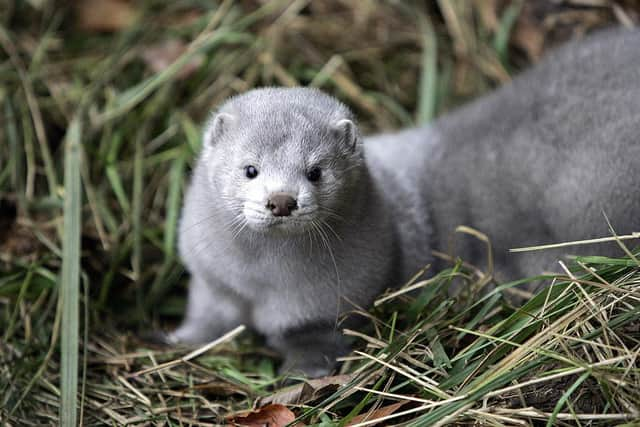Are there mink farms in the UK? Risks explained as Denmark to cull up to 17 million animals after mutated form of Covid discovered
and live on Freeview channel 276
Denmark has been removed from the UK’s coronavirus travel corridor list, following concerns over a mutated coronavirus strain.
The decision to remove the country from the travel corridors was taken following the news that a mutated form of coronavirus has emerged from Denmark’s mink farms, which could be spread to humans.
Advertisement
Hide AdAdvertisement
Hide AdTransport secretary Grant Shapps said the move to remove Denmark was recommended by the government’s chief medical advisor, Professor Chris Whitty.


But should we be worried about this mutation here in the UK?
Here is everything you need to know.
Are there mink farms in the UK?


American mink (there is also a European species) were first imported to the UK in 1929 for commercial fur farming.
By 1956, many had escaped or been intentionally released into the wild and had begun to breed, and there were several instances of animal rights activists freeing large numbers of mink from fur farms in the 1990s.
Advertisement
Hide AdAdvertisement
Hide AdMink fur farms no longer exist in the UK (the industry was banned in 2000), yet mink remain one of the most controversial 'invasive' species in the UK, and numbers are thought to be on the rise.
Their thriving population is a cause of concern for environmental and conservation groups, but not because of the risk of coronavirus.


Mink prey on species such as water vole and fish, and can disrupt the ecology of a canal or river; their success has coincided with a severe decline in the number of water voles, and the rodent is now heading towards extinction.
Has it happened before?
This isn’t the first such outbreak among large mink populations to occur since the beginning of the Covid-19 outbreak, and there have been over a million cases of the virus in farmed mink in Europe.
Advertisement
Hide AdAdvertisement
Hide AdIn July, nearly 100,000 mink were culled at a farm in Spain, after over three quarters of the animals tested positive for coronavirus.
The outbreak at a farm in North-East Spain, in the Aragón province was found after a farm employee's wife contracted the virus back in May.
After the workers became infected with the virus, all 92,700 mink were subsequently isolated and monitored; tests showed that 87 per cent of the mink were infected with the virus. Health authorities ordered for all of the mink to be culled.
Aragón's Minister of Agriculture, Joaquin Olona, told reporters that the decision to cull the mink was taken in order "to avoid the risk of human transmission.”
Advertisement
Hide AdAdvertisement
Hide AdHowever, Mr Olona added that it was not clear if "transmission was possible from animals to humans and vice versa," but said it was possible that an infected farm worker passed the coronavirus to the animals, or that the animals passed it to workers.
Even earlier in the year, the Dutch government said it had found two suspected cases of farm workers being infected by mink, with tens of thousands of mink recently culled in the country after coronavirus outbreaks were found.
Why is a coronavirus mutation bad?
Experts in the country say the mutated virus could have a damaging impact on the effectiveness of a vaccine.
The Prime Minister of Denmark has said that the country will cull its entire captive mink population, which could mean as many as 17 million.
Advertisement
Hide AdAdvertisement
Hide AdThat’s an economically damaging decision that has won the praise of the World Health Organisation; Denmark is a world-leader in the production and export of mink fur, with millions’ worth going to the Chinese market every year.
Should we be worried?
While there is still much to learn about Covid-19 and any mutations that might arise from it, it remains possible that new strains of the disease could make the jump from humans to animals.
How likely that is remains to be seen, and it’s worth noting that the culling of mink is more of a precaution against larger populations of the animal and other species that could be infected by coronavirus.
Conservationists are concerned that if the virus were to cross into wildlife, it might go unnooticed, and Covid-19 could be catastrophic for endangered animals such as gorillas and chimps.
Could my cat get coronavirus?
Advertisement
Hide AdAdvertisement
Hide AdIn July, the UK government announced that a cat in the UK had been diagnosed with Covid-19; there have been no major outbreaks reported among felines, however.
Taking no chances, in August it was reported that Russia is developing a coronavirus vaccine for cats.
The new coronavirus vaccine is “needed primarily for mink” according to Sergey Dankvert, the head of the country’s veterinary watchdog Rosselkhoznadzor, but cat owners will want a vaccine for their pets if they contract the virus.
